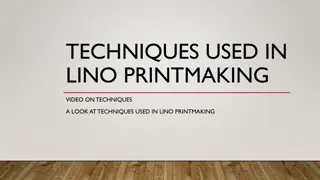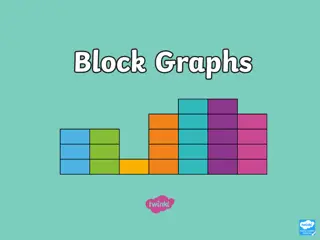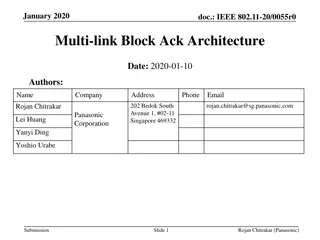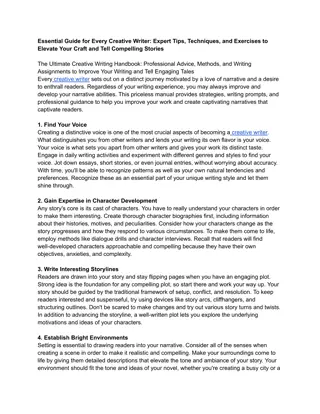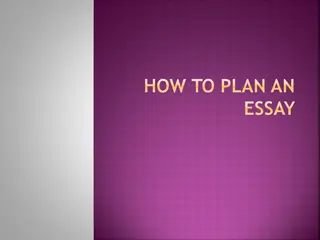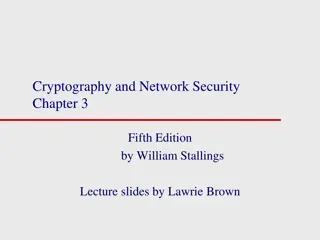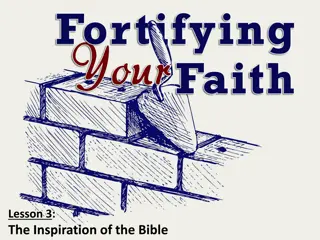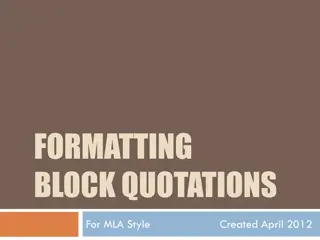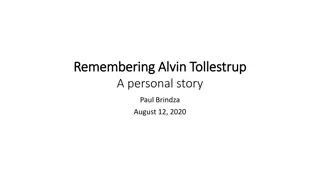Overcoming Writer's Block: Strategies and Techniques for Creative Inspiration
Explore diverse methods to combat writer's block including diagnosing the type of block, generating ideas, dealing with an overflow of ideas, initiating writing, outlining effectively, dealing with being stuck, and managing boredom or stress. Discover helpful tips from understanding assignments to outlining techniques, all aimed at enhancing your writing process.
Download Presentation

Please find below an Image/Link to download the presentation.
The content on the website is provided AS IS for your information and personal use only. It may not be sold, licensed, or shared on other websites without obtaining consent from the author.If you encounter any issues during the download, it is possible that the publisher has removed the file from their server.
You are allowed to download the files provided on this website for personal or commercial use, subject to the condition that they are used lawfully. All files are the property of their respective owners.
The content on the website is provided AS IS for your information and personal use only. It may not be sold, licensed, or shared on other websites without obtaining consent from the author.
E N D
Presentation Transcript
Writers Block Melissa McMullin, Psy.D. MCAPS
Diagnose Your Block No Ideas Too Many Ideas Can t Get Started Outline Black hole Stuck in the Middle Bored/Stressed Loudmouth Inner-Critic
No Ideas Do you understand the assignment? Find your inspiration: What do you connect in the material? What would you like to learn? Rewrite the prompt for the assignment Group brainstorm
Finding Ideas Instructor Textbook or other assigned readings Other students in class Professional journals or popular magazines Relate it to your major Consider past experiences Learn more about your beliefs
Too Many Ideas List them Review & Consider: How do your ideas relate to one another? What type of assignment is this? Length of the paper? Consolidate your ideas (if warranted) What will your topic do for you?
Cant Get Started Write anything! Write badly Write for just 15 minutes Write the smallest conceivable portion of your paper Reward yourself for writing Make a writing date with yourself
Outline Black hole Symptoms: Your mind is a jumble of thoughts You ve written portions of the paper, but don t know where you are going with it Step away from the computer! Mind map Strategically brainstorm Keep It Simple and Small (K.I.S.S.)
Outlining Techniques Mindmapping/Clustering Spatially relate main concept to sub-concepts to examples/support Hierarchy Main idea Sub-points Examples Facts Statistics Listing List ideas then organize by color coating and other markers.
Stuck in the Middle Work backwards Revisit your outline Write anything Rearrange the building blocks
Bored and/or Stressed Revitalize Assess your self-care Assess your timeline Exercise Stretch and/or jump Talk it out Breathe Eat brain food Revisit your topic Check in with your critic
Loud-Mouth Inner Critic Entertain your critic and write down what he or she says. Evaluate the truth of the critical statements. Challenge thought associations: If this paper sucks, then I am a failure. Reframe the thought (s) Challenge your critic with hard facts. Re-assign your critic to editor.
Practicing Reframing Your Thoughts Challenge your thoughts: What is the evidence that the thought(s) is/are true? Not true? Is there an alternative explanation? What s the worst that could happen? Could I live through it? What s the best that can happen? What s the most realistic outcome? What are the consequences of adhering to the distorted thinking? What would happen if I changed my thinking? If (friend s name) were in this situation what would I tell him/her?




